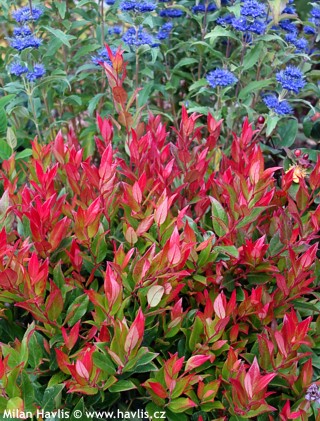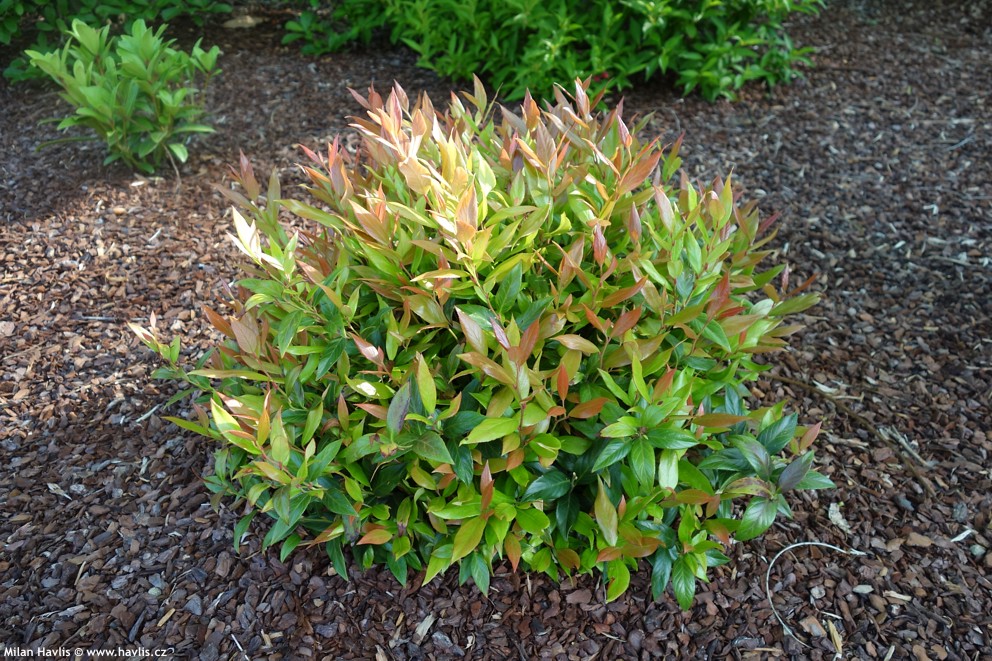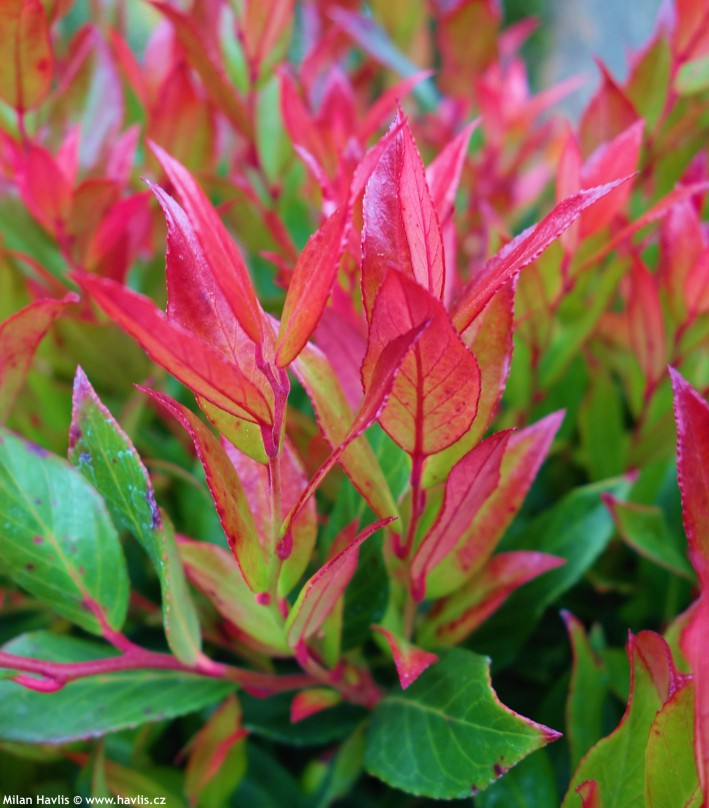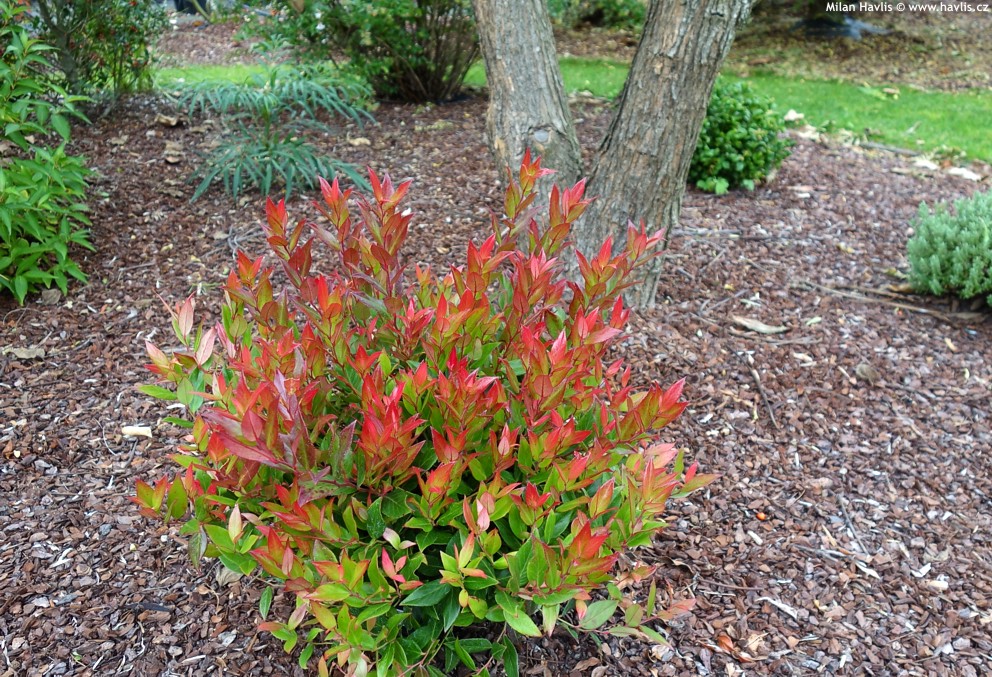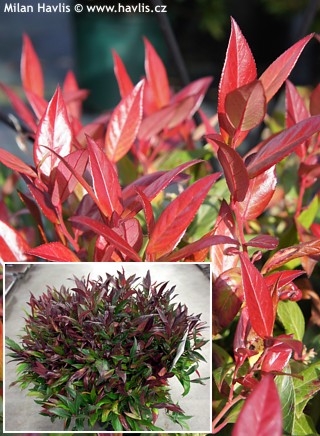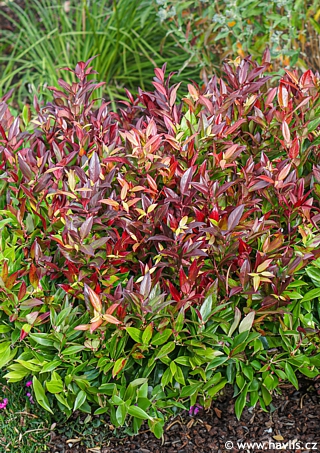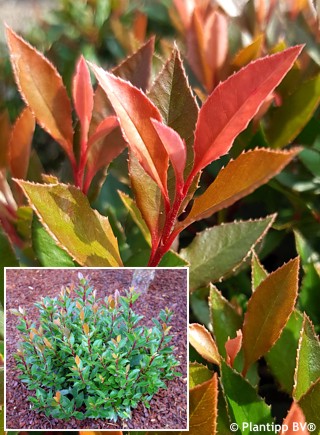Leucothoe 'LITTLE FLAMES'® leucothoe
Leucothoe
In Central Europe leucothoe genus is a relatively new group of plants that gains more and more attention and admirers, including me. They are low or prostrate evergreen shrubs with leathery leaves and usually excellent hardiness. Various species originate in various parts of ther globe - Madagascar, the Himalayas, Japan, N. and S. America. Dutch breeder Ron van Opstal from Zundert has already selected a few evergreen plants including leucothoe, and in this case his colleague Leo Duyndam finds a mutation of an older SCARLETTA® (Zeblid) variety in 2013. It is called Little Flames® and is patented in USA as PP25246, and EU33167 in Europe from 2015.
Little Flames® leucothoe is a love at first sight if you like vibrant red colours. It has short, narrowly ovate, evergreen leaves with a conspicuous tip. They emerge rich red in spring, mature to medium green with red margins in summer, and change to vibrant carmine red in autumn, and glossy wine red in winter. In late April and May appear small, urn-shaped, insignificant, white flowers. Twigs with spent flowers should be removed immediately after flowering to prevent the plant from making seeds, and thus exhausting it.
Little Flames® will find its place almost anywhere. Being compact and low it can be placed among other shrubs of similar type (rhodos, azaleas, kalmias), it will brighten up a conifer bed, and make a statement in a perennial bed especially in low season when other plants are dying off or not emerged yet. The habit is very uniform and compact. Pruning is usually not needed but can be done in early spring. It is a fontanesiana hybrid which means that it is less tolerant of drought, especially in winter.
Leucothoe grows naturally at the woodland edge or under trees which tells us that it is used to anything from filtered sun to deep shade. However, our tests proved that it lives happily in full sun, too, where it will show better red if given adequate moisture.
As an ericaceous plant it requires soil that is light, acidic, and constantly moist (not wet). If your garden soil is too heavy do not dig a deep hole but make a shallow and wide bed, topped up with a good mixture of peat, fine bark, and leaf (forest) litter. Keep the soil moist by mulching. Slow-release fertilizers are advised. It is very hardy to about -29°C (USDA zone 5), and suitable for outdoor pots with good water check.
Last update 07-10-2018

































